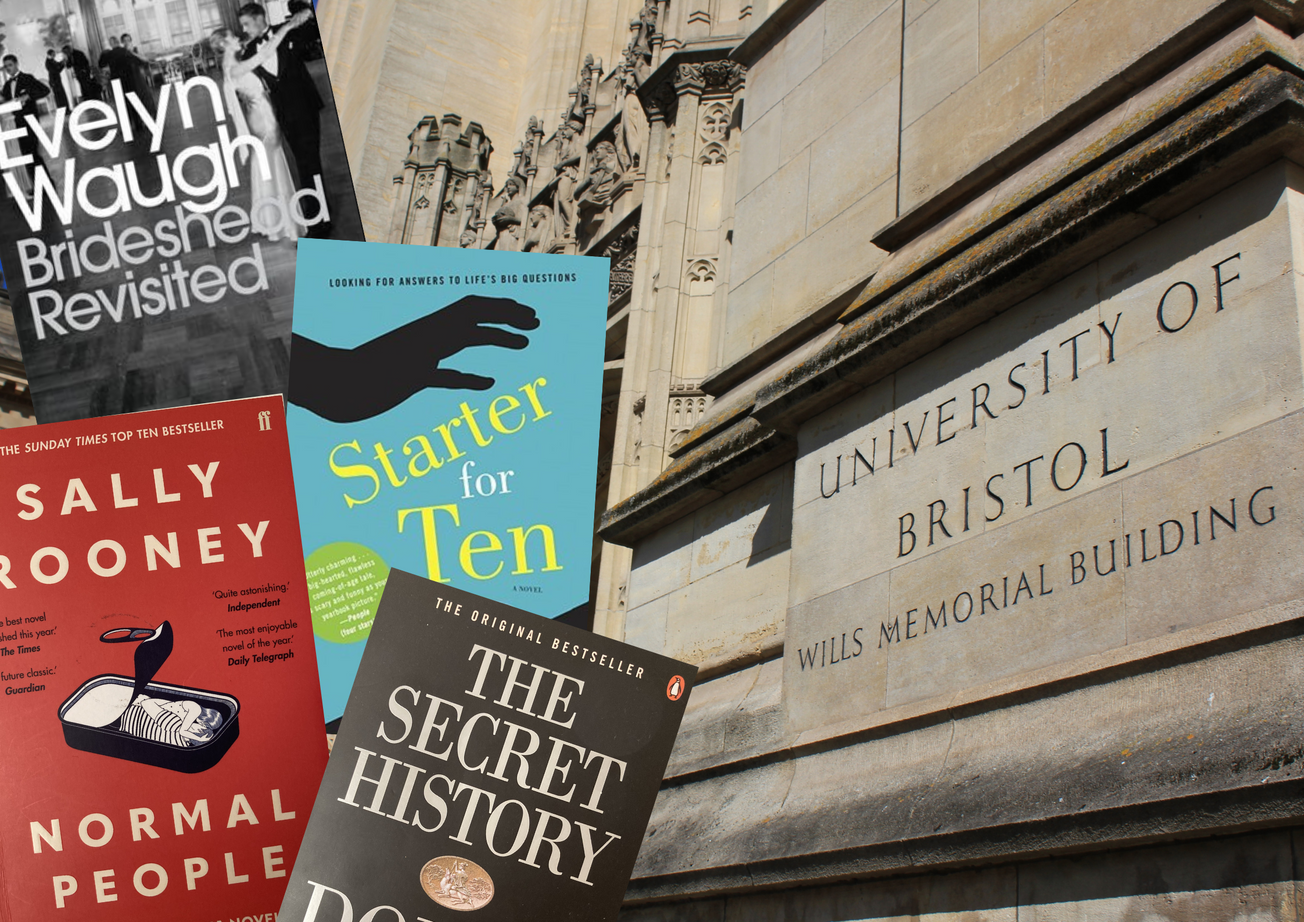By Marine Saint, First Year English and History
As another term of digital learning begins, it is fair to say that so far this academic year has not lived up to our expectations of a university experience. Looking away from the screen and immersing ourselves in literary depictions of university life is one way to take a step back from stress about exams and deadlines and is also an opportunity to reconsider just how accurate these portrayals are.
Campus novels have fascinated readers since their emergence in the 1950s, inspiring the subgenres of varsity novels and campus murder mysteries. The most popular and critically renowned examples include Donna Tartt’s ‘A Secret History’ and Evelyn Waugh’s ‘Brideshead Revisited’, but equally there are contemporary books set at university such as Sally Rooney’s ‘Normal People’ or David Nicholls’s ‘Starter for Ten’ (which had a 2006 film adaptation set at the University of Bristol).
#NormalPeople was simply brilliant. It dealt with themes and topics in such a realistic and honest way. Connell's experience of uni is so close to my own. I wish this novel/series existed during my university years. Book adaptation done right!
— Atika Khanam (@atkbm27) April 30, 2020
Although it is set at the fictitious Hampden College in New England, Donna Tartt’s brilliant mystery novel ‘The Secret History’ (1992) explores many university experiences synonymous with any British experience. The complex debates between the protagonists, six classics students on an elite programme, certainly relate to the academic challenges of tertiary education, but it can be said that universities have become more inclusive since the 1990s when Tartt was writing. The novel’s focus may be the morbid effects of Professor Julian Morrow’s teachings on the students but also underlines the potential of university as a site of change. Indeed, universities in fiction provide the ideal setting for a coming-of-age narrative as they represent the some of the most demanding and tumultuous years in our lives.
The cultural impact of seminal campus novels like works by David Lodge (best-known for his campus trilogy: ‘Changing Places’, ‘Small World’ and ‘Nice Work’ ) or Tartt is undoubtable in view of the numerous books and films that have been created around this setting. The extent of creative output from authors reminiscing about university life shows how both this location and unique time in someone's life is fascinating to read.
‘The Secret History’, for one, has inspired further murder mysteries set at elite colleges such as ‘The Bellwether Revivals’ and ‘The Truants’, displaying university campuses as confined places of intrigue, ironically reminiscent of student halls lockdowns earlier this year.
Whilst ‘Brideshead Revisited’ (published in 1945) and ‘The Secret History’ present an elite university sphere distant from the reality we face, modern examples such as Rooney’s hugely popular ‘Normal People’ embodies both the transitions that occur whilst being a student and addresses the culture shock which many are confronted with when transplanted from their home environments. Rooney’s novel gained even more attention with the release of its TV adaptation last year and revisiting her book even as a first-year student demonstrated how it is one of the most accurate depictions of university life to date.
As a Marxist writer, Rooney calls attention to the mixing of classes and backgrounds at university through the contrasting lifestyles of protagonists Marianne and Connell. As well as different family upbringings colliding at university, there is the shock of the divide between private and state school routes to university. Rooney presents the potentially life-changing opportunities university can afford - like her protagonists she benefited from a Master’s scholarship from Trinity College Dublin.
Universities in fiction provide the ideal setting for a coming-of-age narrative as they represent the some of the most demanding and tumultuous years in our lives.
In a Guardian interview in 2018 Rooney stressed the significance of class and economy on her writing of university experience set in the aftermath of a financial crash: ‘It would have been really difficult for me to write about young people leaving home in the west of Ireland, moving to college, and not confront the economic disparities that were emerging at that time, like the stripping back of protections for people from working-class backgrounds who were going to college. I don’t think I would have been able to really explore what was going on in those characters’ interior lives without being sensitive to the changes that were happening outside.’
The main element of ‘Normal People’ which depicts the reality of university is its representation of social anxiety, loneliness, and the impact a new environment can have on mental health. Unlike other famous campus novels, we see protagonist Connell struggling with the often-isolating periods of time at university and eventually getting support to open up about his struggles.
December Bookshelf: Wintery reads to keep you roasting this Christmas season
January Bookshelf: Reading recommendations to indulge in some escapism this month
With the stressful time of exams and assessments, as well as the effects of online learning and the uncertainty about university normality returning, it is refreshing to see these difficulties faced by fictional characters. Although literature can provide much-needed escapism from studies, let us hope that the next generation of novels set at university continue to look at the more testing and realistic aspects of campus life as well as the idealistic.
What are your favourite representations of university in literature?
Featured Image artwork by Noa Blane Damelin / Photograph of Wills Memorial Building by Cameron Scheijde








